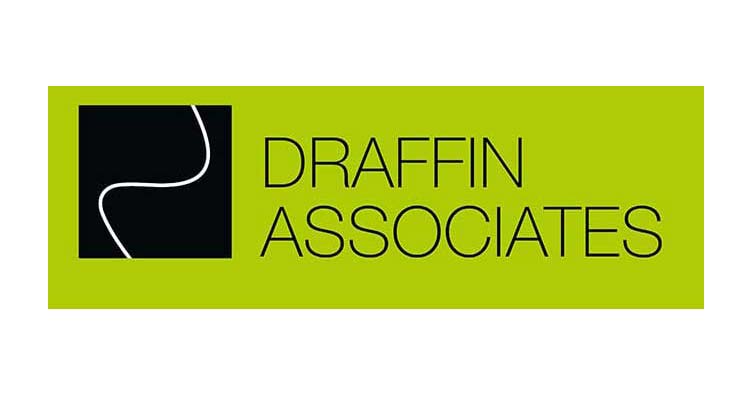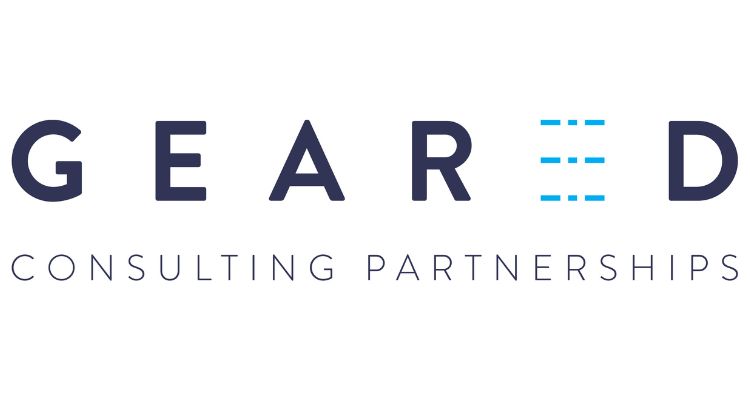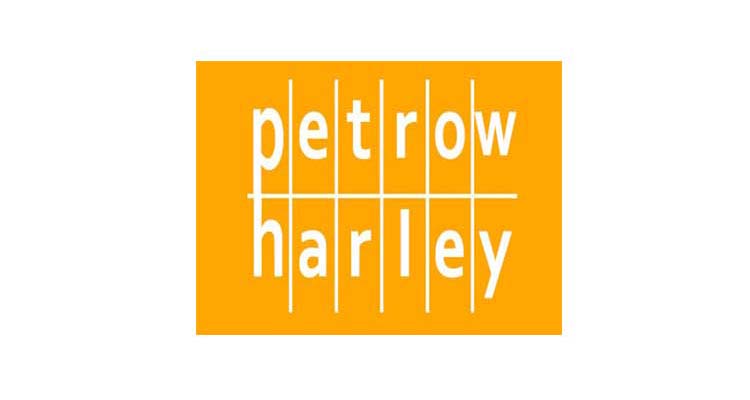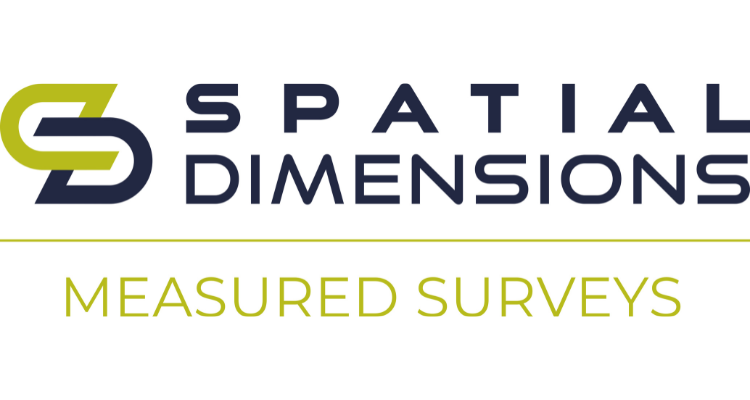PREFERRED
PARTNERS
- BUILDING THE RIGHT TEAM FOR YOUR PROJECT
We have built up a network of trusted specialist professionals who make up our Preferred Partners.
This network ensures that almost any specialist advice required through the Four Stage Planning & Design Process can be dealt with quickly and efficiently to provide the best possible chance of success.
Our Preferred Partners work with our Architectural team to provide the necessary technical support required to address site constraints before submission and address unforeseen issues that may arise from the Council, statutory consultees or local residents throughout the planning process.
If you are interested in becoming a Preferred Partner or know of a company who could improve our network please do not hesitate to contact Robin Segal.

Adnitt Acoustics is an independent acoustic consultancy practice based in Epsom in Surrey. Our services span the entire design and build process, from providing sound and vibration design advice and solutions to testing and monitoring of noise, dust and air leakage.
With most development sites in the South East affected by some form of transport noise, meeting the acoustic components of local authority planning requirements can be onerous. We help clients through the planning process by assessing the extent of any problem, providing practical recommendations, producing the necessary reports and, if appropriate, attending planning meetings.
We can also assess the situation where a new development might affect noise sensitive residential neighbours, including licensing and planning applications.
Call 01372 897 897 or email Robert Adnitt at robert@adnitt.com.

We are a multi-disciplined and experienced Building and Energy Consultancy firm carrying out sustainable building and energy assessments. Base Energy was established in 2008 and now has offices in the North West & South of England. We have grown due to the increase in the building industries emphasis on sustainable development. We have expertise from across the industry, with over 35 years of experience dealing with a wide portfolio of clients including major multi-national companies and independent architects/developers. We continually strive to offer the most comprehensive building consultant service for building developments.
Our team of experienced Sustainability Consultants constantly grows their knowledge and experience of the industry to ensure that we offer the most effective service for you and offer competent advice to be able to get the most out of your development. Supporting and advising our Clients with the concept of sustainable development and we continue to build our portfolio of services in order to offer a complete solution for a sustainable development.
Choose us with confidence to carry out sustainable building and energy assessments to the highest standard.
Our services include:
- Daylight and Sunlight Studies
- SAP / SBEM calculations
- EPCs
- BREEAM Schemes
- Sustainability / Energy Statements

We are a multi-disciplined and experienced Building and Energy Consultancy firm carrying out sustainable building and energy assessments. Base Energy was established in 2008 and now has offices in the North West & South of England. We have grown due to the increase in the building industries emphasis on sustainable development. We have expertise from across the industry, with over 35 years of experience dealing with a wide portfolio of clients including major multi-national companies and independent architects/developers. We continually strive to offer the most comprehensive building consultant service for building developments.
Our team of experienced Sustainability Consultants constantly grows their knowledge and experience of the industry to ensure that we offer the most effective service for you and offer competent advice to be able to get the most out of your development. Supporting and advising our Clients with the concept of sustainable development and we continue to build our portfolio of services in order to offer a complete solution for a sustainable development.
Choose us with confidence to carry out sustainable building and energy assessments to the highest standard.
Our services include:
- SAP / SBEM calculations
- EPCs
- BREEAM Schemes
- Sustainability / Energy Statements

Brian Gale Surveyors were established in 1985. We have Building Surveyors and Valuation Surveyors who are experts in working with all types of property, especially period and historic buildings. We are extremely proud to be members of the Royal Institution of Chartered Surveyors (RICS) and are regulated by RICS Guidelines and protocol. All our Surveyors are RICS Registered Valuers under the RICS Accredited Valuer Registration Scheme, giving you confidence in our levels of training and expertise.
We are an Independent Surveying Company based in Surrey and are not owned by any large organisation and we are not Estate Agents – so you can relax in the knowledge that our advice will be truly impartial, and not influenced by any “third party interests!”.
We are local, the Surveyors live and work in the area, and this ensures accurate reporting of values and we also have an understanding of the local issues which may affect the chosen property. Since our establishment in 1985, we have given advice upon all forms of property, to both large and small Corporations, Public Bodies, PLC’s and Government/Local Authority departments and carried out thousands of private individual house surveys.

Canopy Consultancy Ltd have over 15 years experience of proving arboricultural advice to the
private and public sector.
We cover all aspects relating to trees and planning applications as well as tree hazard assessment surveys, tree risk management plans and detailed tree health surveys.
Contact : Neil Taylor, Principal Arboriculturist and Managing Director
Email : neil.taylor@canopyconsultancy.com
Telephone : 07775 686 588


Connick Tree Care is an independent, family owned Arboricultural Company established in 1985 and specialising in Consultancy and Contracting. The development of the company has been driven by the aspiration to provide high quality arboricultural services through cost effective solutions whilst ensuring customer satisfaction.
As part of our range of services we provide a high quality arboricultural consultancy to multiple market sector clients including private residential, public realm and commercial. Our consultancy department can provide professional arboricultural advice on a wide range of topics which include;
- Trees in relation to development, from project inception tree feasibility surveys, Arboricultural Impact Assessment and Method Statements for planning and On Site Supervision and Advice during Construction.
- Tree Preservation Orders.
- Further investigation including Decay Detection and Air Spade root investigations.
- Tree Condition.
- Managing and Monitoring Tree Works
In addition to our consultancy department Connick Tree Care have a large contracting department with multiple depots throughout the South East of England who can undertake all your physical tree work requirements.
Call Richard Tilling on 01737 779191 or email richard.tilling@connicktreecare.co.uk

We offer a wide range of building consultancy services focused on promoting sustainability and low energy use in both residential and commercial sectors. Our in-depth knowledge has been attained through extensive experience enabling us to use pragmatic advice from the planning stage through to building completion and beyond.
Contact us for advice on any Energy Consultancy needs you may have including SAP & SBEM Calculations, EPC’s, Thermal Bridging and Modeling Calculations, Carbon Reductions Plans, Sustainability Statements, BREEAM, etc…
Consult Sustainability, Elm Mews, 55 Elmcroft Road, Orpington BR6 0HZ
Contact: Stuart Searle | Tel 01689 497 852 | email Stuart.searle@consultsustainability.co.uk

Based in south-east England, Claire Munn heads up the Ecology team for David Archer Associates and provide a full suite of ecology advice, surveys and reports.
We provide a multi-disciplinary service and bespoke solutions to a variety of environmental constraints and opportunities. We are experienced in providing advice for a range of developments requiring planning consent, those that are permitted developments and a range of other projects.
We also deliver free ecology-based CPDs, which can be tailored to suit your requirements.
Contact Claire Munn on 0333 772 1152 or claire@davidarcherassociates.co.uk

David Archer is a well respected Arboricultural Consultant handling a wide variety of tree related work including:
- Residential and Commercial sites
- Arboricultural Method Statements
- Tree Protection Plans
- Expert evidence at appeal
Contact David Archer on 01825 840254 / 07512 346919 or david@davidarcherassociates.co.uk

dBA Acoustics carries out consultancy work focusing on acoustic survey, noise input assessment, sound insulation testing, acoustic design and noise control. They are accredited by the Sound Insulation Testing and Measurement Association and provide a personal & professional approach with an agile business model tailored for small to medium sized projects.
Contact details:
dBA Acoustics
Railway Cottage
49 Arnold Road
Woking
Surrey
GU21 5JX
Email: david@dbaacoustics
Tel: 01483 771282

Draffin Associates is an independent landscape and environmental design consultancy, the core skills being landscape planning and design offered in a personal and responsive service. We assist landowners, and property developers in enhancing their land investment. We help clients to build commercially successful schemes while addressing environmental issues.

Flume provides civil engineering services, specialising in flood risk and drainage design services. With years of experience in the industry, we have built a reputation for delivering innovative design solutions for our clients.
Our team of skilled engineers, hydrologists, and flood risk consultants work closely with clients to understand their requirements, and develop solutions that are sustainable, resilient, and cost-effective.
Contact : Tom Quigg
Email : info@flumeconsultants.com
Telephone : 020 805 850 22

Geared Consulting Partnerships are a team of chartered engineers based in Adelaide, Australia & London, United Kingdom, who provide structural + civil design and consultation services.
In the United Kingdom, we are also experts in dealing with Party Wall matters.
With 30+ years of on site building experience and a focus on providing creative yet practical solutions, we specialise in Architecturally led bespoke residential & commercial projects. We pride ourselves in being involved in most of our projects from concept through to construction, so will always keep the end goal in mind during the whole process.
Contact : George Ramsay
Email : george.r@gearedpartnerships.com
Telephone : 0203 951 8308

Founded back in January 2000 we had the opportunity to set-up Hook Survey, with a passion for our friendly, flexible and reliable approach towards meeting our client’s needs in terms of specification, time-scale and cost, and in the accuracy and high quality presentation of our end product.
With 30 years experience of the surveying & building industry we have spent the years since building up an excellent reputation with an ever expanding portfolio of clients.
Initially based in Bexley, South London, expansion of the business has led to our re-location into more spacious office accommodation in nearby Wilmington, Dartford, ideally situated near to the M25 with easy access to main transport links.
In 2014 our Midlands office was opened by Ben Cox in order for us deal with demand across the whole of the UK, this continues to expand and has been a real success ever since it’s first year of opening.
To date The Hook Survey Limited has received over 9000 instructions from a wide range of clients for topographical, measured floor plan, elevation and hydrographic surveys.
These range in size from small single unit developments to large consortium sites including amongst others
• Shopping Centres
• Golf courses
• Service tracing
• Department stores
• New housing schemes
• As-built surveys
• Office developments
• Sports grounds
• Boundary disputes
• Hotels
• Leisure Centres
• Landfill sites
• Local authority buildings
• Universities
• Schools
Our Survey teams are employed in a variety of surveying fields using the latest survey technology of Lecia instrumentation, Laser scanning, GPS, SCC & MBS building software, 2d & 3d processing & latest AutoCAD.
In 2003 we became full members of The Survey Association, known generally as TSA it is the trade body for commercial survey companies in the UK.
Contact:
T: 01322 277221
E: mail@hooksurvey.com

Motion is a leading independent consultancy providing expert advice in transportation, water, infrastructure and civil engineering design services. From small-scale, one-off tasks to large, multi-million pound projects, we work in partnership with clients and transport authorities to achieve innovative, sustainable, integrated, viable and safe solutions. Our wide-ranging skills are deployed frequently, though not exclusively, on development led projects.

Our experts offer guidance on flood risk, flood risk mitigation, resilience and resistance to help safeguard the natural environment and private property.
Flooding puts people’s homes, businesses, wellbeing and livelihoods at risk. Damaging floods are becoming more prevalent due to extreme weather patterns caused by long-term global climate change.
The need for a Flood Risk Assessment (FRA) is currently a planning requirement under the NPPF. We have considerable experience in supporting developers on how best to manage flood risk from the conception stage through to construction.
We are able to guide you through the process to protect your project. We do so by ensuring objectives are met while satisfying Environment Agency (EA) and Lead Local Flood Authority (LLFA) criteria.
We also provide strategic advice and guidance to Internal Drainage Boards (IDBs) and other water-level management organisations.
Contact : Neil Jaques
Email : njaques@motion.co.uk
Telephone : 07557 304223
Website: www.motion.co.uk/services/flood-risk

Solicitors for Business
At Newmans, our solicitors take the time to understand your business in order that we can then provide you with a legal service and the required level of expertise to help your business achieve its goals. Our experts are able to advise your business on a wide range of matters including:-
- Commercial Disputes
- Commercial Property & Re-mortgaging
- Commercial
- Corporate
- Debt Recovery
- Employment
- IP, Trade Marks & Patents
Services for Individuals
Having a solicitor should be as natural as having a doctor or a dentist to call upon whenever the need arises because as sure as you will get flu or a toothache during your lifetime, you will also face a time when you need legal advice from a solicitor. Newmans’ private client services cover virtually all areas of law and we can advise you on all the legal requirements you have.

We are consulting engineers with a wealth of experience covering all aspects of Drainage Design, including Sustainable Urban Drainage Systems Design, Flood Risk and Consequence Assessments, as well as Flood Evacuation plans, and Surface water management schemes nationwide.

Paul Basham Associates is an award-winning independent Transport Planning, Travel Planning, Civil & Structural Engineering Consultancy providing a wealth of experience and technical excellence. With a tailored approach and reputation founded on developing an intrinsic knowledge of our client’s requirements, we help achieve integrated, sustainable and innovative solutions.
From initial feasibility through to detailed design, we work with both private and public clients across a variety of sectors, including residential (in-fill, masterplanning, immediate, brown field regeneration and land promotion etc.) as well as offering expertise in the retirement and later living, education, commercial, infrastructure, retail and energy sectors. Adopting a ‘one business model’, we ensure consistency in approach, utilising the breadth of knowledge and skills within the business to develop lasting partnerships with our clients.
Our aim is to add value throughout every stage of our support by utilising our relationships with highway officers, imparting our knowledge of local areas and using the full breadth of our experience gained across our project portfolio. Testament to this is the trust and confidence clients have in us to act with their best interests at heart.
Contact : Spencer Bryan, Associate Director
Email : spencer@paulbashamassociates.com
Telephone : 07805 351 373 / 01329 711000
Address: (Southern Region) The Bothy, Cams Hall Estate, Fareham, Hampshire, PO16 8UT

Petrow Harley is an award winning practice of Chartered Landscape Architects with over twenty years professional experience. We have successfully worked on over 500 separate projects and developed a collaborative and ideas led approach to the problem solving of environmental issues faced when making changes to our world. This is successfully combined with the technical abilities we have amassed over many years for a broad range of private and public sector clients.
Our strength lies with our ability to bring together the diverse skills and experience required within a working culture that combines creativity, pragmatism and commercial sense.

Solent Sky Services is a multi award-winning full-service aerial media consultancy.
Serving commercial, marine, event, and construction industries with professional aerial films and ground photos, property and land surveys, FPV Drone Filming and in-house editing and marketing. It’s been proven that drone videos and photography are highly engaging both on and offline. We provide bespoke drone content to help businesses obtain higher engagement with their marketing campaigns and assist filmmakers with story telling.
Our impeccable safety record has earned us special CAA permissions, allowing us to fly further, higher, and closer than other drone companies, in more places, circumstances, and conditions. We’re a family-run business, headquartered in Portsmouth and operating all over the UK. We’re very well-connected within the drone, film making, and advertising industries, and can assemble larger teams for projects of all scales.
We hold the legacy PfCO certification and all flights are carefully conducted with full risk and method statements being undertaken.
Our owner is a qualified surveyor with over 16 years’ experience and our head of photography has his masters in visual communication. We’re trusted to deliver by large corporate companies and small businesses alike, safety is paramount and delivering a superior service is mission critical.
We add value at each stage of the planning process by providing:
- Aerial and ground photography and point cloud models of existing sites and buildings.
- Short films to showcase the benefits of projects to assist with the success rate of planning applications.
- Measured surveys utilising drones over small and large sites.
- Showcasing projects in progress and upon completion. Perfect for sharing with prospects, online engagement and future proposals.
- FPV Drone tours.
- 360 photography tours.
Michael Woods B.Sc. Hons
Owner, Drone Pilot, Producer and Director of Photography
Email: mike@sss.direct
Sara Woods
Co owner / Project Manager
Email: sara@sss.direct
Tel: 02393 879555
Web: www.solentskyservices.co.uk

Solent Sky Services is a multi award-winning full-service aerial media consultancy.
Serving commercial, marine, event, and construction industries with professional aerial films and ground photos, property and land surveys, FPV Drone Filming and in-house editing and marketing. It’s been proven that drone videos and photography are highly engaging both on and offline. We provide bespoke drone content to help businesses obtain higher engagement with their marketing campaigns and assist filmmakers with story telling.
Our impeccable safety record has earned us special CAA permissions, allowing us to fly further, higher, and closer than other drone companies, in more places, circumstances, and conditions. We’re a family-run business, headquartered in Portsmouth and operating all over the UK. We’re very well-connected within the drone, film making, and advertising industries, and can assemble larger teams for projects of all scales.
We hold the legacy PfCO certification and all flights are carefully conducted with full risk and method statements being undertaken.
Our owner is a qualified surveyor with over 16 years’ experience and our head of photography has his masters in visual communication. We’re trusted to deliver by large corporate companies and small businesses alike, safety is paramount and delivering a superior service is mission critical.
We add value at each stage of the planning process by providing:
- Aerial and ground photography and point cloud models of existing sites and buildings.
- Short films to showcase the benefits of projects to assist with the success rate of planning applications.
- Measured surveys utilising drones over small and large sites.
- Showcasing projects in progress and upon completion. Perfect for sharing with prospects, online engagement and future proposals.
- FPV Drone tours.
- 360 photography tours.
Michael Woods B.Sc. Hons
Owner, Drone Pilot, Producer and Director of Photography
Email: mike@sss.direct
Sara Woods
Co owner / Project Manager
Email: sara@sss.direct
Tel: 02393 879555
Web: www.solentskyservices.co.uk

Spatial Dimensions are a professional Geomatics (Land) Surveying company specialising in measured building surveys, laser scanning and 3D modelling. We measure, map and model for a large variety of professional sectors within the built environment. From control surveys, topographical surveys up to accurate 3D Rights of Light models, 3D visualisations and scan to BIM surveys.
We have made significant financial investments in the latest geomatics technology available, meaning we have the right tools for the projects we undertake. The combination of the best people with the right values and the right tools for the job has led to phenomenal growth since our inception.
Our team fully understand the interest of all parties, from architects to homeowners. We offer consultation, listen and consider all options before advising our clients of the best solution from their projects. We strive to deliver a first class customer service, with continual communications throughout by:-
- Providing clear well-structured quotes
- Fast and efficient site survey services
- Presenting thorough and detailed deliverables
We share common purpose and values. We want to be refreshing in our customer care, to be mindful not to overload clients with too much technical jargon in our fee proposals and to help them understand what/how and when we are delivering. We aim to show full support after completion of a job and we are proud to have and continue to receive numerous testimonials from both our regular clients and new clients alike. Our staff are trained in customer service and offer a discreet and confidential presence on site where appropriate. This has led to a loyal and happy client base with several 5 star reviews and testimonials.

We are an Independent ecology consultancy with our head office based in Leatherhead, Surrey. Our work takes us across England and includes a range of projects from barn and loft conversions to large-scale urban expansions, new solar farms (PV) and new town design and green and blue infrastructural development.
We have over 20 years of experience in the consultancy sector and our team brings together a wealth of experience and technical excellence. We are passionate about our job and believe that effective ecological management can be achieved alongside development. As such, the Ecology Partnerhip is able to provide the to appropriate and sustainable solutions to support the projects that we become involved in.
Contact : Alexia Tamblyn
Email : info@ecologypartnership.com
Telephone : 01372 364133

WS Heritage provides independent, commercially informed advice and services in the historic environment and conservation. For schemes involving listed buildings, conservation areas, scheduled monuments, new design or archaeological deposits, we provide support at all stages of planning and development.
From feasibility and concept, throughout the whole of the planning process, to site and the discharge of conditions or appeal.
Acting on behalf of developers, architects, planners and property owners, our expertise is drawn from projects across the public, private and third sectors, involving a wide variety of historic buildings and areas, throughout the UK. As a result, our approach to advocacy and negotiation with authorities on behalf of clients is pragmatic and objective, whilst remaining both cost-efficient and effective.
Mark Sanderson | 07951 926869 | enquiries@ws-heritage.co.uk

1
PREPARATION AND BRIEFING
We work closely with all of our clients to shape a clear design brief from the outset of each project. The site constraints often dictate the level of specialist external advice required to support a planning application. Obtaining topographical surveys, seeking highways, heritage, noise, arboricultural and ecological advice at an early stage is fundamental to ensuring the best chance of obtaining planning permission and ensuring the project can be built successfully from the outset.
Preferred Partners or input from other external consultants are not always necessary on every application, however it is becoming more important to front load applications to ensure sufficient information is provided for the Local Planning Authority as well as reducing the number of pre-commencement conditions that slow down the process after permission has been granted.
Involves:
Liaising with Preferred Partners or external consultants at an early stage.
Results in:
Obtaining necessary fee proposals from identified Preferred Partners.
2
Concept Design
The Concept Design covers the outline proposals for the project leading to a pre application submission to the Local Planning Authority where required. While projects vary, this stage ensures that the Design brief has been met before moving on to the Spatial Coordination stage. Additional reports may not be required at this stage to validate a pre-application submission, however where there are significant constraints or the high probability that one of the Local Planning Authorities internal consultees will need to comment then providing the necessary information at an early stage can secure a more positive response from the Local Planning Authority at this stage.
Involves:
Liaising with Preferred Partners or external consultants and addressing planning policy and site constraints with the necessary information.
Results in:
Client approval and/or Pre-Application submission (Usually requires a meeting with and written response from the Local Planning Authority).
3
Spatial Coordination
Using feedback from the client and/or pre application process the Spatial Coordination can be finalised. We work closely with our Preferred Partners and/or external consultants to ensure that the site constraints and relevant planning policies have been addressed in order to progress with an application. This often involves Arboricultural reports to identify tree constraints and protection plans, Highways reports to ensure pedestrian and vehicular safety and Ecology walkovers to ensure that wildlife and protected species are not harmed by the proposal. Other reports that are becoming mandatory are Energy Statements and Community Infrastructure Levy forms setting out any necessary contributions triggered by the proposal.
Architectural Visualisation is used for all types of application and can make all the difference when conveying the impact of a proposal on the character of the area. Some Local Planning Authorities will request Architectural Visualisations to use at Planning Committee to provide additional detail for members of the public or elected members to provide additional detail.
Involves:
Liaising with Preferred Partners to ensure that the Planning Submission covers all of the constraints identified at the outset or following pre application feedback from the Local Planning Authority.
Results in:
Planning application submission; monitoring application through to decision. Liaising with Preferred Partners and/or external consultants to ensure that internal consultee comments are responded too where necessary.
4
Technical Design
Following receipt of the planning approval there may be the need to discharge conditions as well as handling the detailed technical design before construction can commence. Our services include Building Regulations drawings and submissions, detailed drawings and specifications, tendering and contract administration. Our Preferred Partners and/or external consultants will provide specialist reports to aid the discharge or conditions and provide technical information such as Structural Calculations for Buildings Regulations as well as advice from Quantity Surveyors on costings to enable us to go out to tender on building projects.
Involves:
Assessing planning conditions; Co-ordinating external consultants; Building Regulations drawings; detailed drawings & specifications
Results in:
Releasing pre commencement conditions; Building Regulations plans approval; Contract administration; Hand over
